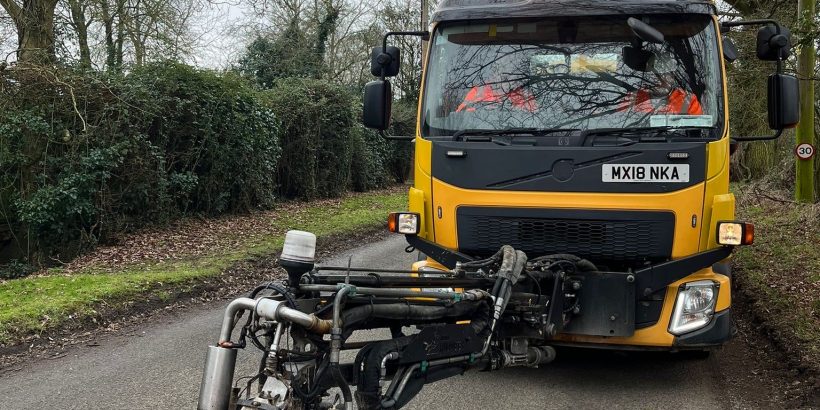The inevitable increase in potholes on Suffolk’s roads this winter are set to be repaired quicker following innovative dragon patching technology being trialled in the county.
Suffolk Highways has welcomed the new pothole-repairing machine to help fix the growing number of potholes experienced nationally during the winter season, with a trial set to initially target defects in rural Suffolk.
The Dragon Patcher is a machine that releases compressed air which cleans the surface of the road, before heating the surface to a temperature that enables repair material to bond effectively with the road surface, allowing the pothole to be repaired with an aggregate and hot bitumen material.

Compared with the traditional approach of repairing potholes, the Dragon Patcher can work five times faster. This trial is in addition to the potholes being repaired around the clock as part of our routine repair programme, during the past two months Suffolk Highways has repaired 2,851 potholes across Suffolk.
Fuelled by the biodiesel, HVO (hydrotreated vegetable oil), the patcher reduces raw material use and creates zero waste and has shown to provide significant carbon savings when compared to traditional patching techniques.
Councillor Paul West, Suffolk County Council’s cabinet member for Ipswich, operational highways and flooding, said:“The recent cold and wet weather has expectedly brought a huge spike in the number of potholes appearing across our roads and we are working around the clock to tackle the current levels we are seeing.
“The arrival of the Dragon Patcher in Suffolk will help bolster our efforts in getting these defects repaired, especially focusing on rural roads where we can repair higher numbers, in a fraction of the time.
“This new piece of kit is one way in which our new highways contract strives to provide better value for Suffolk’s taxpayers and works to reduce impact on the environment.”
The Dragon Patcher has been used this week to repair roads in Pakenham, Stanton, Tostock Rattlesden, Gedding and Woolpit and was also used in Bury St Edmunds in Cadogan Road and Oliver Road.
Once the trial ends in Suffolk, a decision will be taken on whether to roll out the technology across the county.

